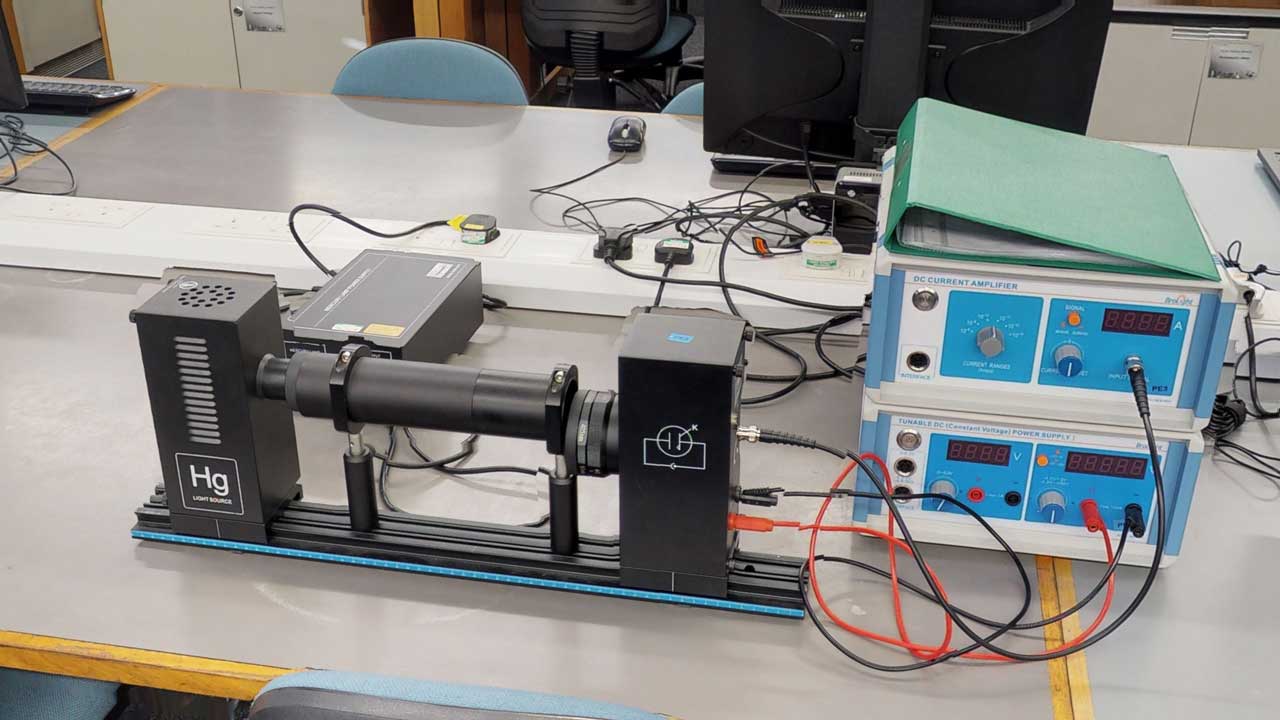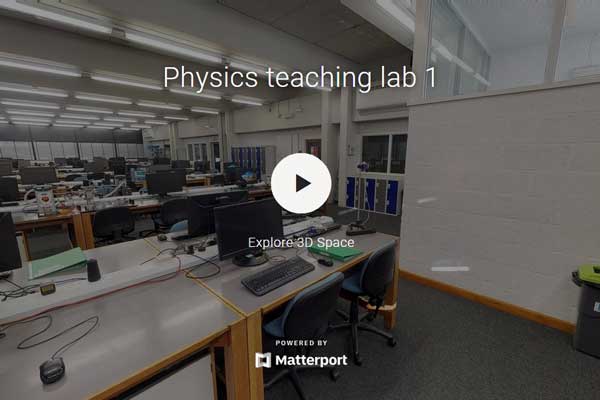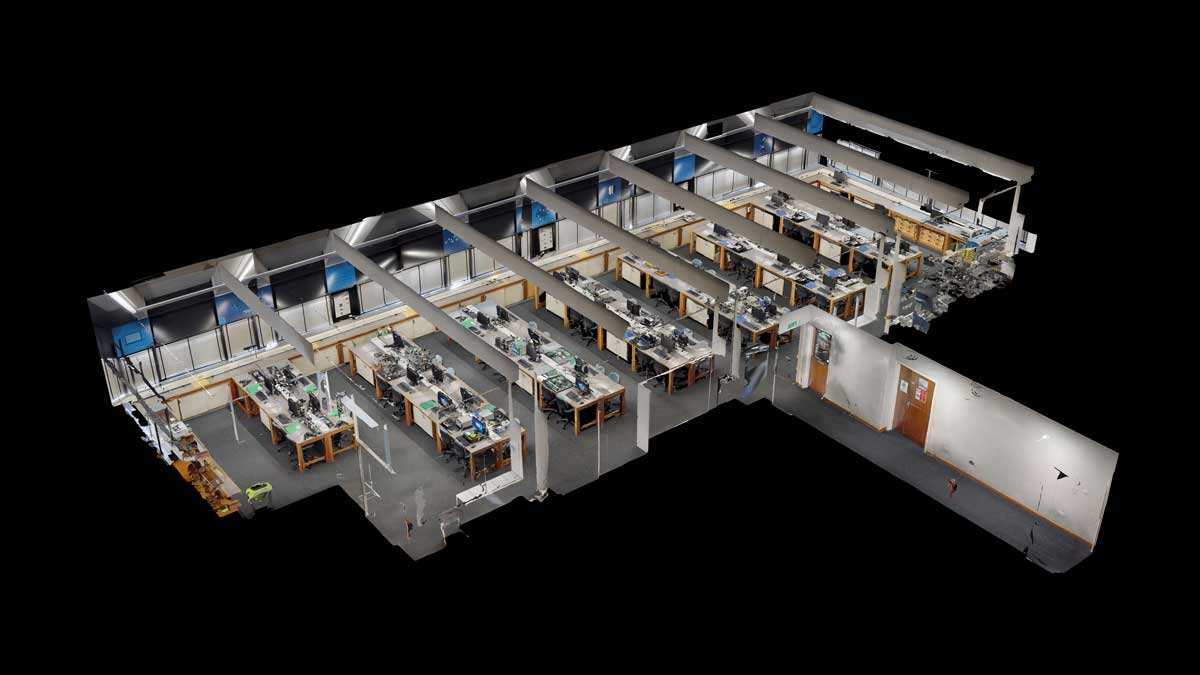
Physics teaching lab 1
This tour shows a range of equipment and facilities available in one of our modern, dedicated laboratories.
The interactive version allows you to walk through the lab and get a 360° view of the facilities.
Related links
Introduction
Our professional technicians have set out 14 experiments to showcase the extensive range of equipment available in the main undergraduate Physics lab.
- Rotational motion
- Plasma generation
- Ultrasound measurement using pulse-echo techniques
- Microwave physics
- Speed of light
- Magnetic field uniformity in a solenoid
- Biot savart
- The band gap of semiconductors
- Torque on magnetic dipoles
- Hall effect in p-type Ge
- Temperature variation of electrical resistance
- Charge decay from a capacitor
- Properties of liquid nitrogen
- Photoelectric effect
Rotational motion
This experiment investigates core physics concepts such as rotational kinetic energy, angular momentum and moments of inertia using computer-based data logging.
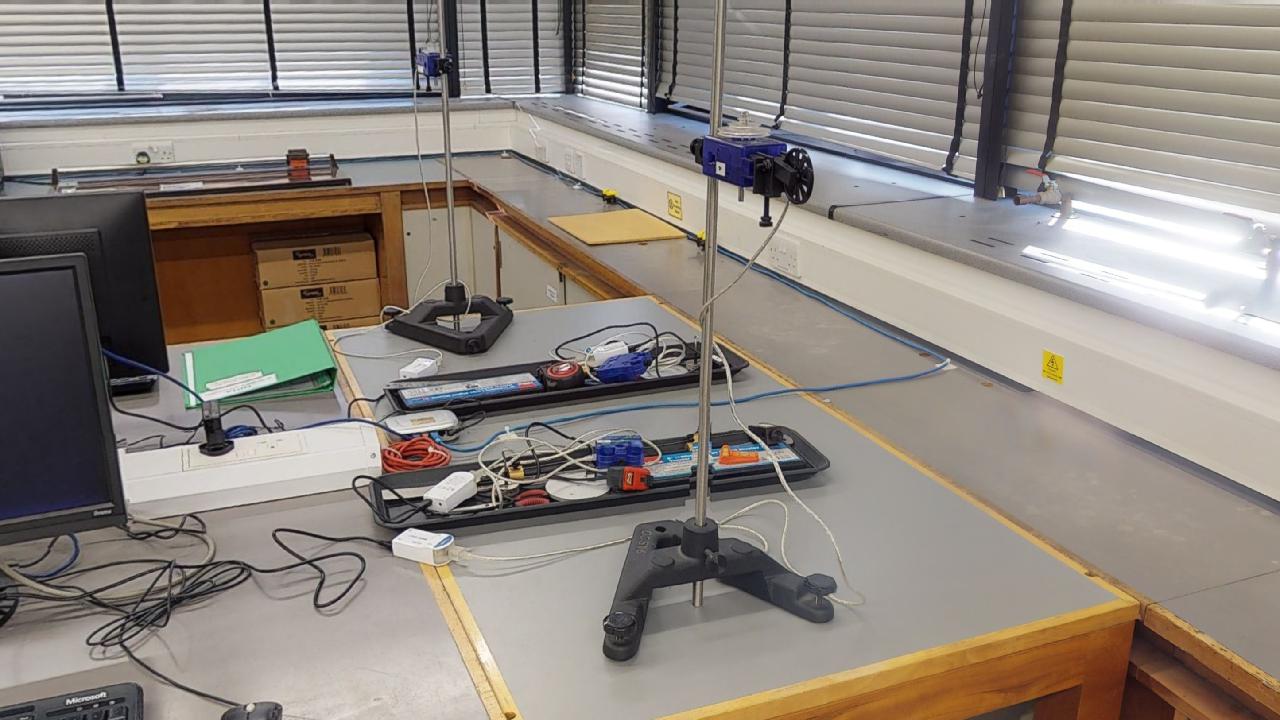
Plasma generation
This experiment utilises kV potentials to break down a variety of gases, creating plasma: the fourth state of matter. It's designed to measure the effect of pressure of the breakdown potential of the gas, as well as undertaking finite element modelling of the electrodes.
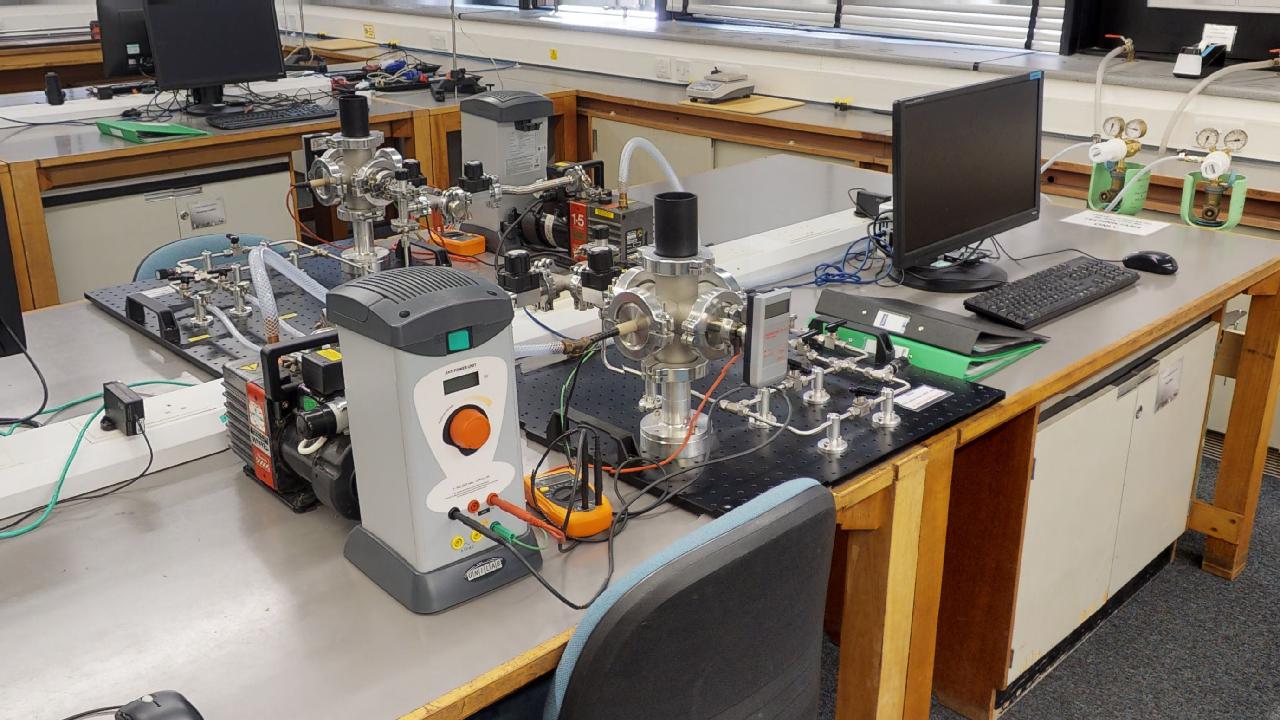
Ultrasound measurement using pulse-echo techniques
This experiment underpins the basic science of sound propagation by exploring the use of ultrasound for spatially mapping structure in solids. This technique has applications ranging from medical imaging to determination of structural integrity in engineering.
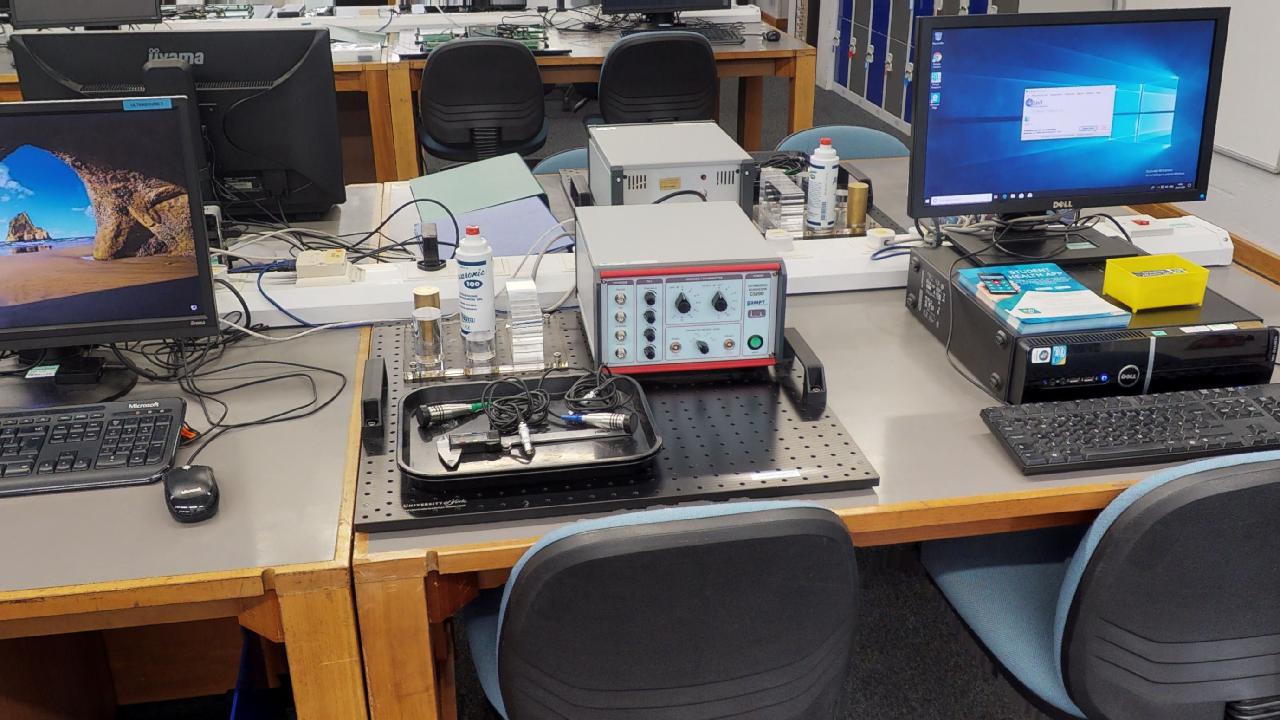
Microwave physics
This equipment explores the transmission of microwave frequency signals along and between strip lines and antennae. It demonstrates the properties of electromagnetism used in real world applications such as mobile phone antenna design and operation.
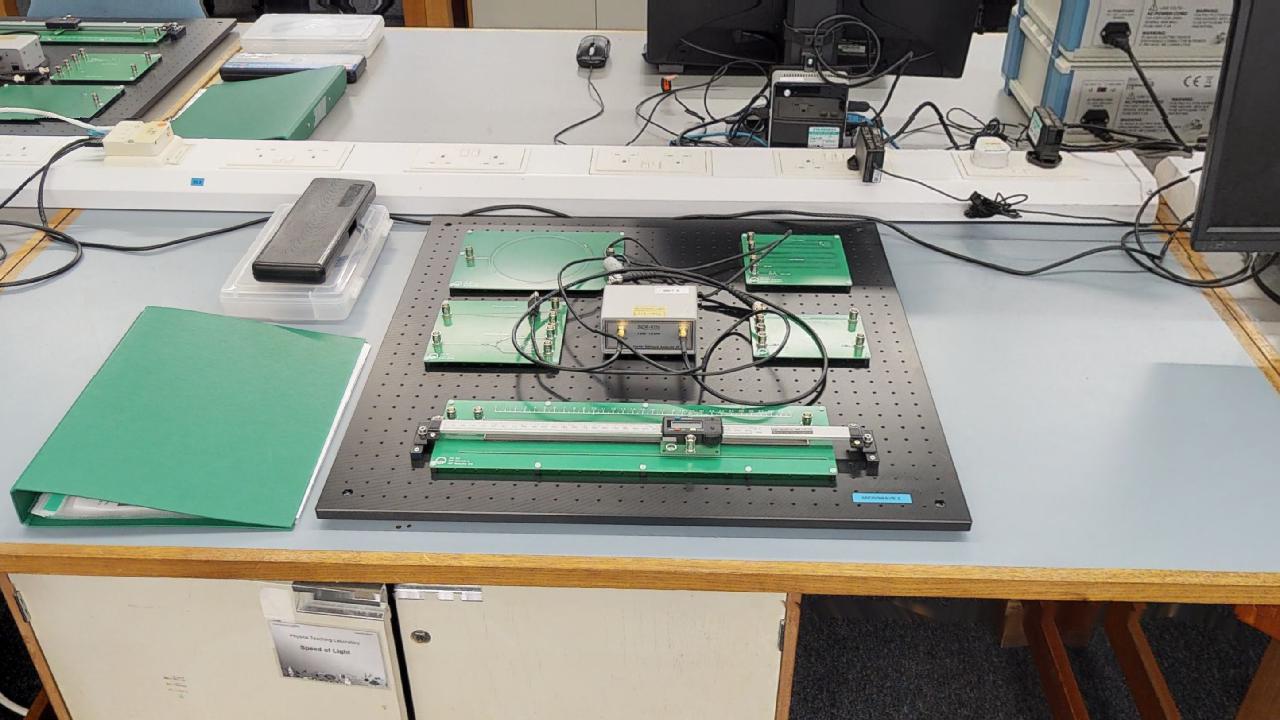
Speed of light
This is a demonstration of the measurement of one of nature's most fundamental constants, the speed of light, with the use of lasers and advanced use of oscilloscopes.
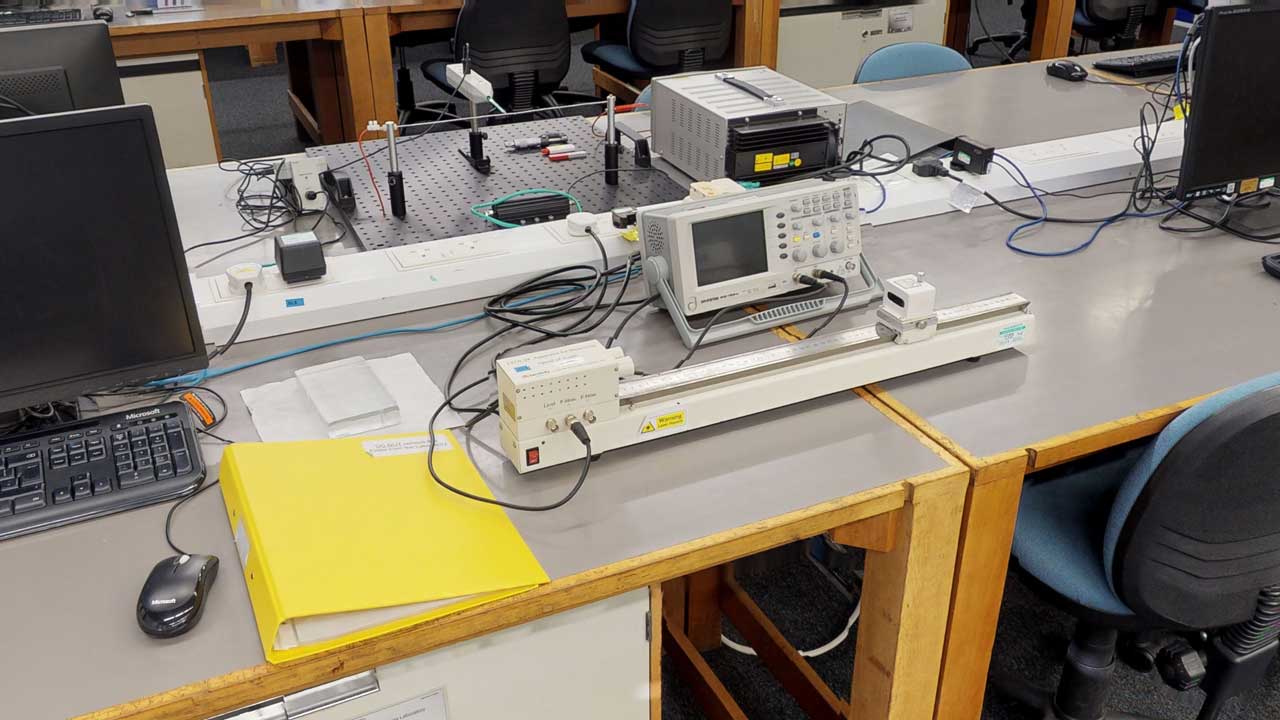
Magnetic field uniformity in a solenoid
This demonstration measures and spatially maps the magnetic field strength of a solenoid utilising a Hall effect sensor.
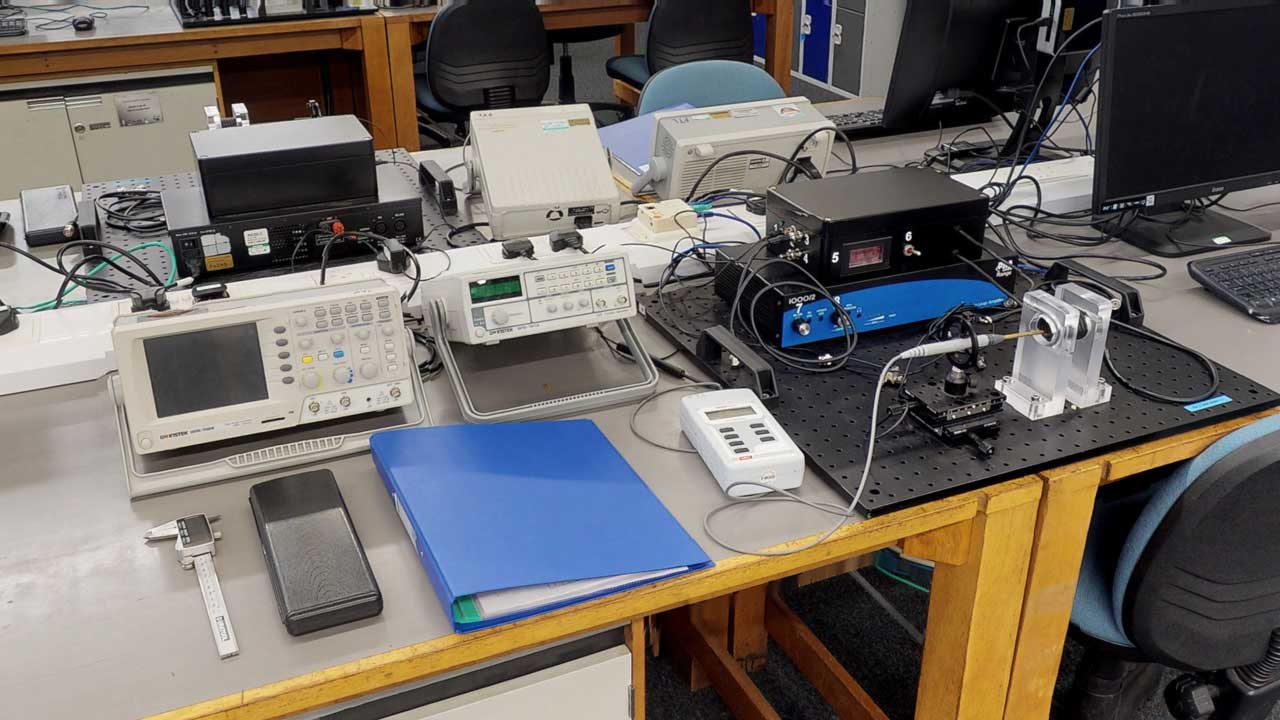
Biot savart
This experiment uses a computer interfaced Hall probe to measure magnetic field intensity generated by a long straight current carrying wire.
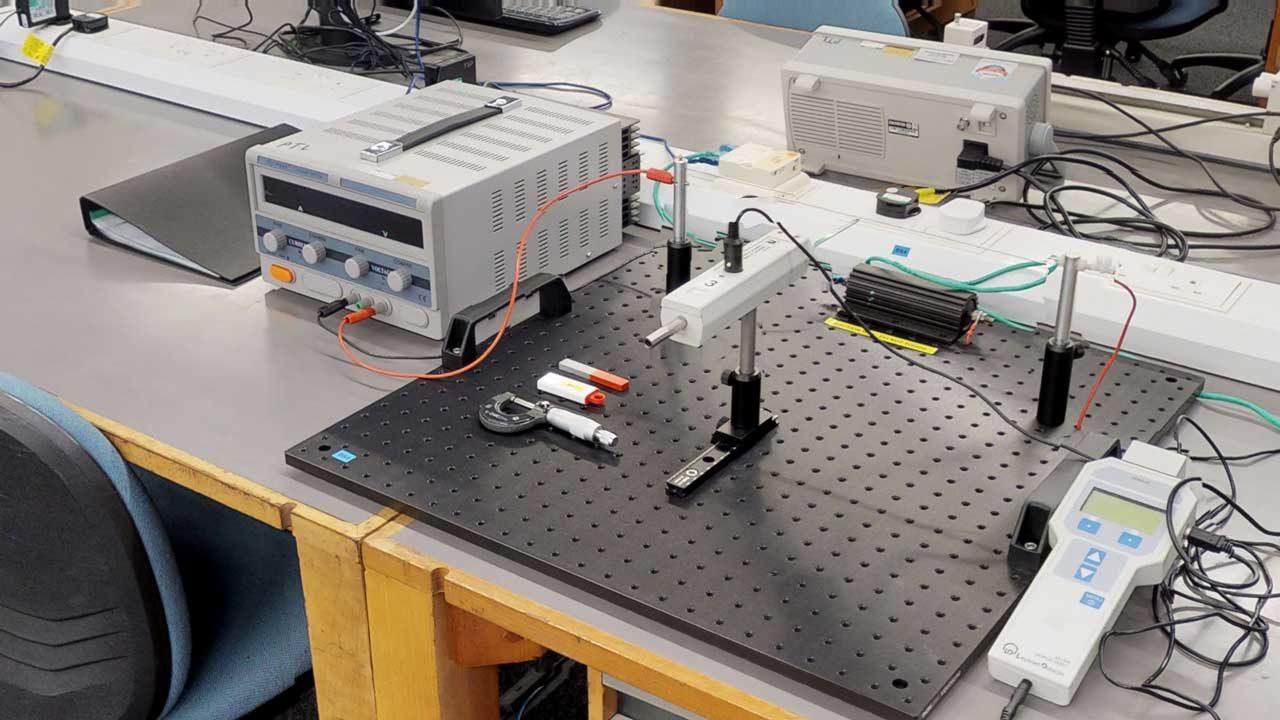
The band gap of semiconductors
This practical experiment explores the physics of semiconductors; the underpinning science of the 20th-century technological revolution. It uses a computer controlled monochromator to perform infrared spectroscopy on numerous materials in order to measure the 'band gap', a characteristic electronic property of semiconducting materials.
![]()
Torque on magnetic dipoles
This equipment is used to investigate magnetic dipoles and their interaction with a uniform magnetic field. This macroscopic demonstration of electromagnetism offers insight into the microscopic mechanisms which occur regularly within atoms, affecting their electronic structure and spectroscopic signatures.
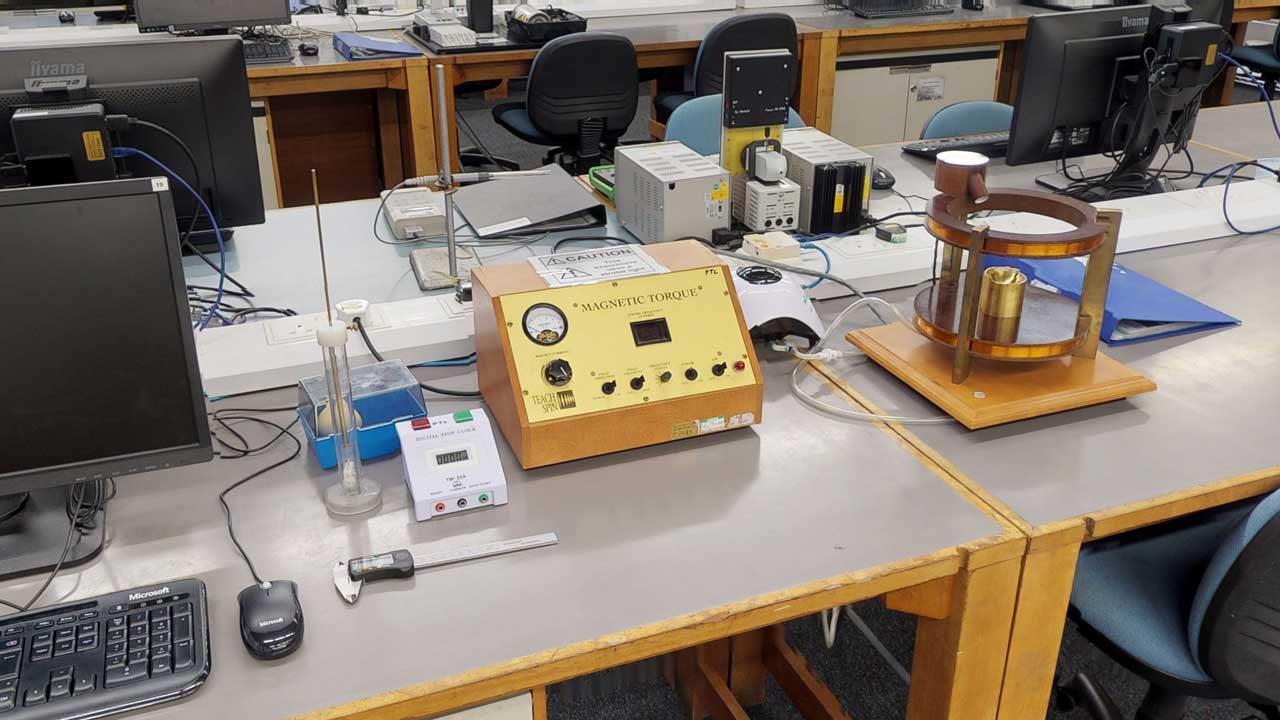
Hall effect in p-type Ge
This demonstration investigates the Hall effect. Materials carrying current while in a region of magnetic field will generate a 'Hall voltage' related to both the electrical carrier density and magnetic field strength. This effect can be used to investigate material properties, or measure magnetic fields.
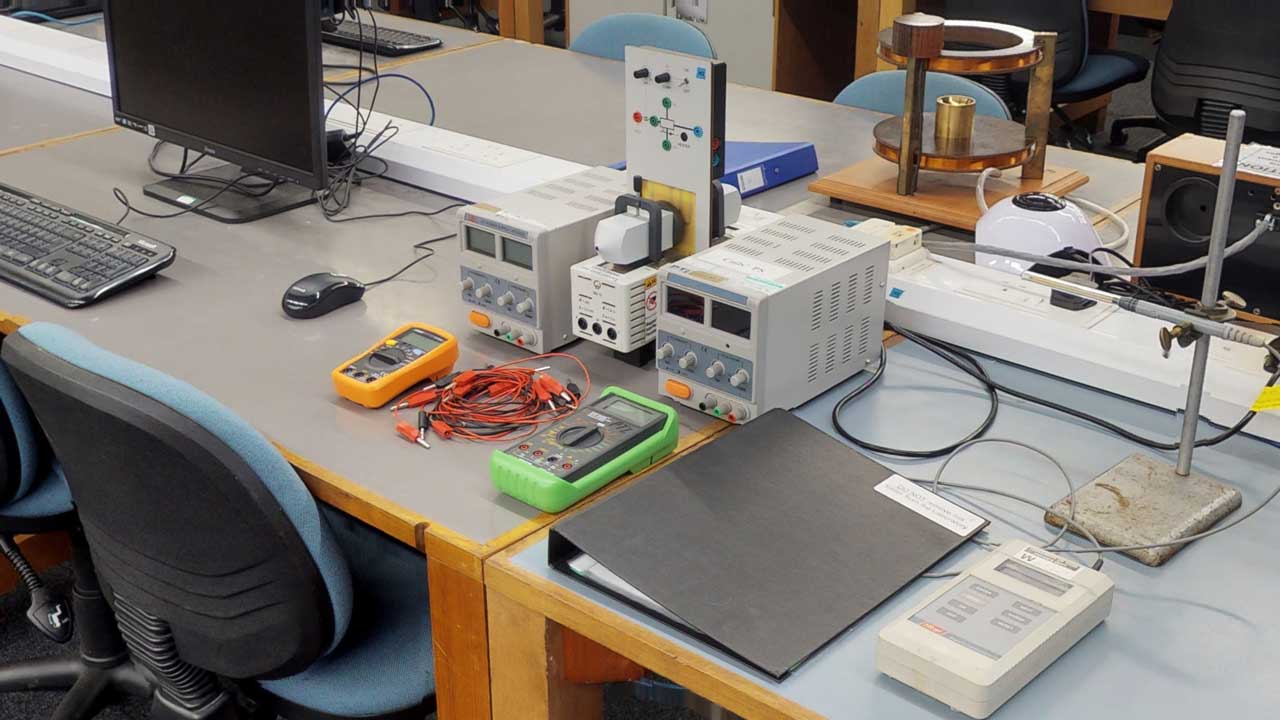
Temperature variation of electrical resistance
This practical experiment uses liquid nitrogen cooling to investigate the effects of cryogenic temperatures on electrical resistance, which can be used to investigate superconductivity and demonstrate magnetic levitation.
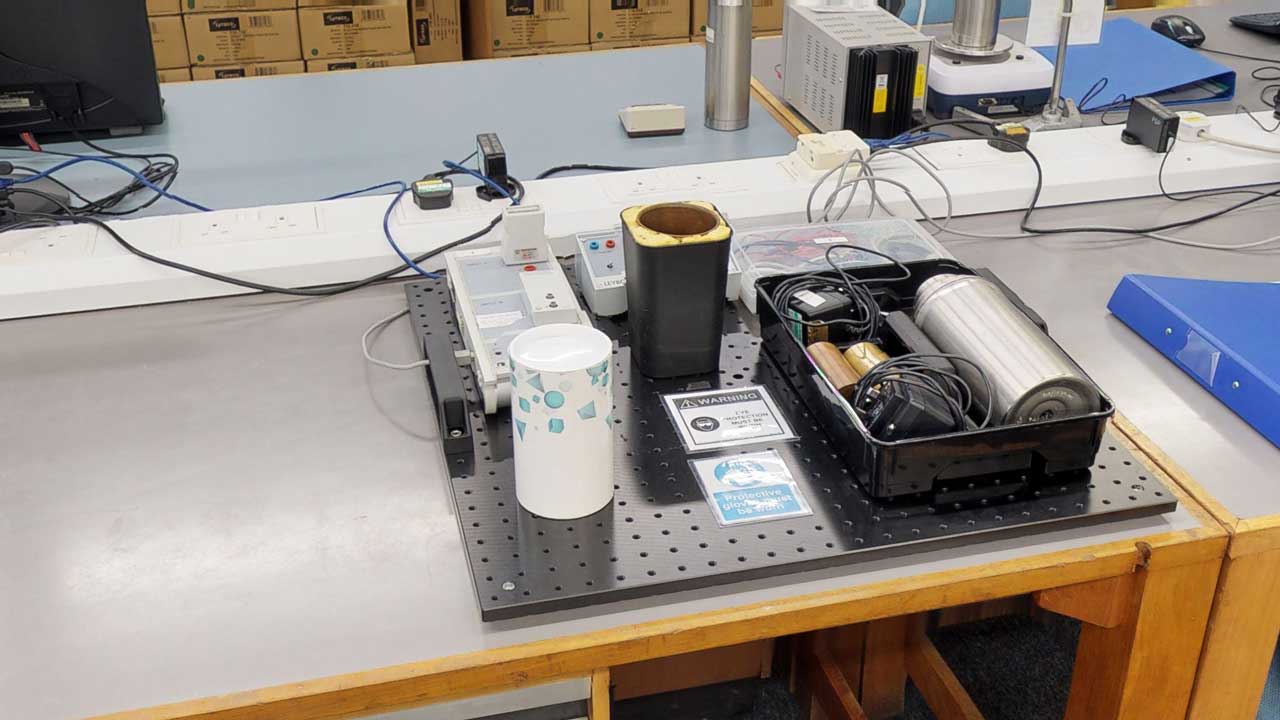
Charge decay from a capacitor
This lab bench is set up with a modern storage oscilloscope to monitor the voltage across a discharging capacitor.
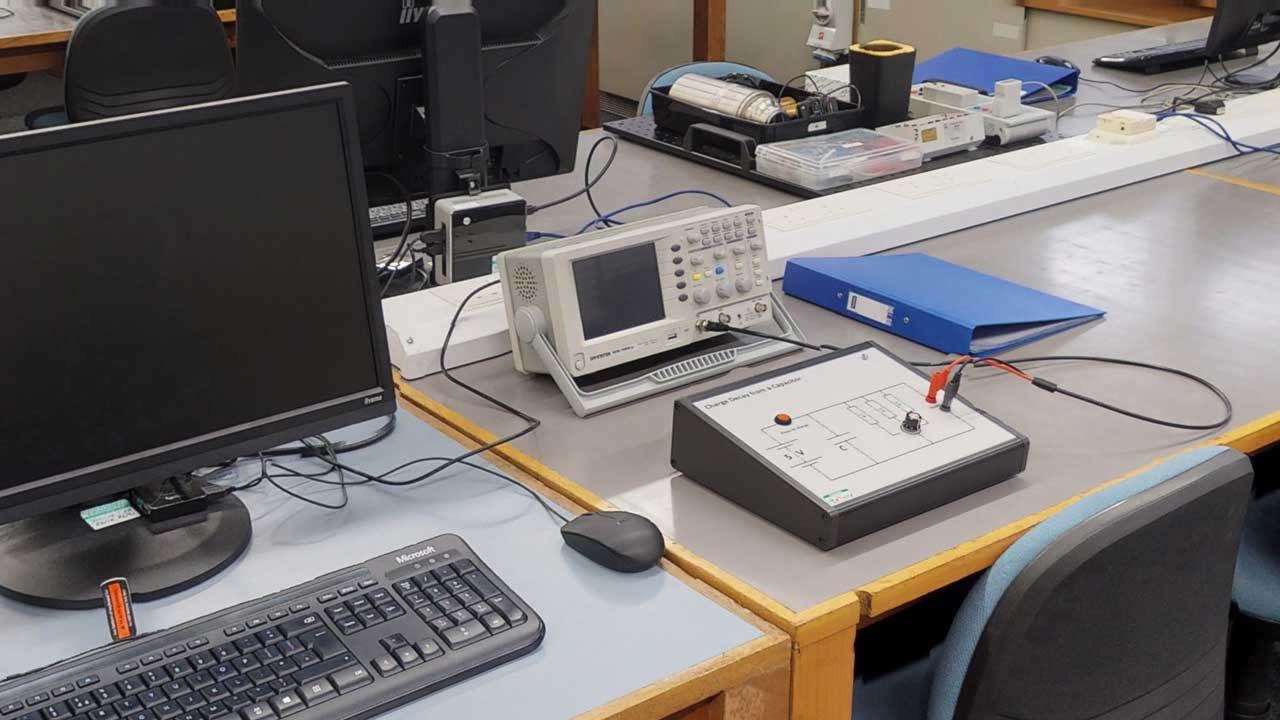
Properties of liquid nitrogen
This set up uses cryogenic materials to determine the latent heat of vaporisation of liquid nitrogen.
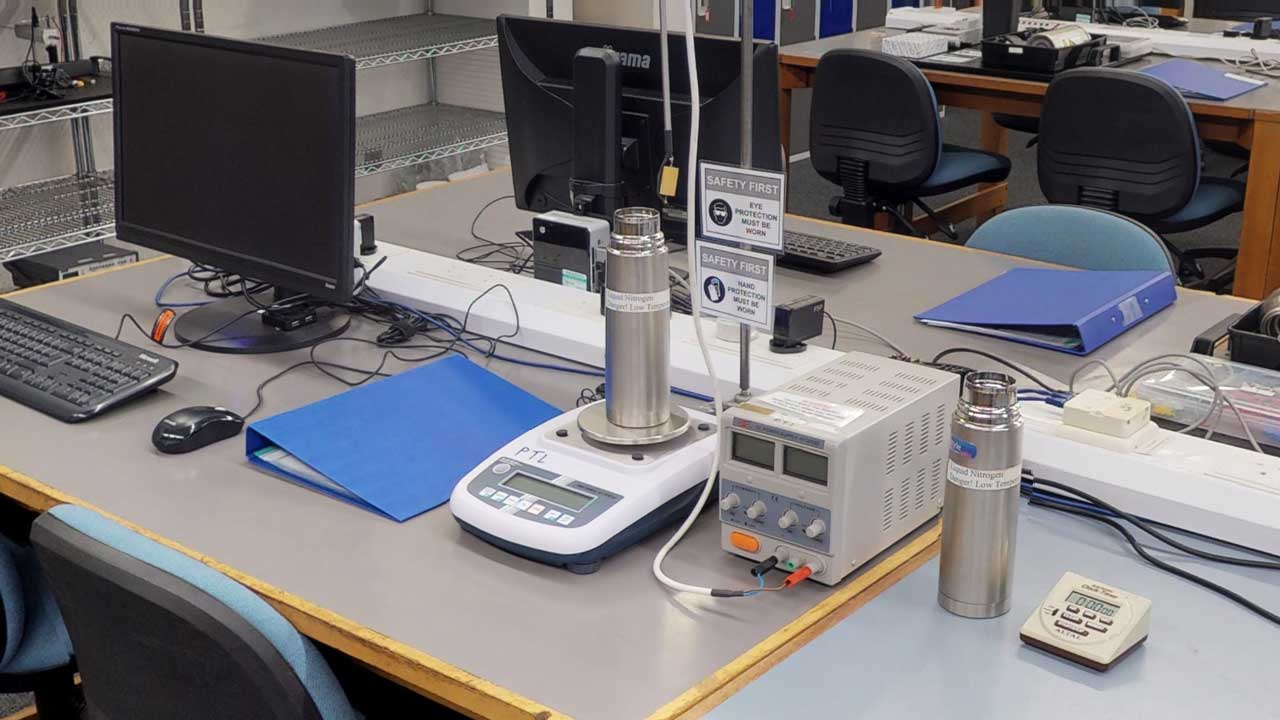
Photoelectric effect
This practical experiment investigates the physics which gained Einstein his Nobel prize, and kickstarted the quantum revolution: the photoelectric effect. It considers the work function of a UV irradiated photocathode and applies Einstein's theoretical insights to measure Planck's constant.
